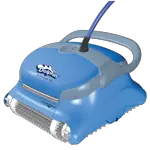Kohler Carburetor Troubleshooting: Expert Tips for Quick Fixes
Kohler engines are known for their reliability and performance. But like any engine, they can encounter issues over time.
One common problem area is the carburetor. A carburetor is vital for mixing air and fuel. When it malfunctions, your engine can sputter, stall, or refuse to start. Understanding how to troubleshoot a Kohler carburetor can save you time and frustration.
This guide will walk you through common carburetor problems and solutions. Whether your engine is acting up or you want to perform preventive maintenance, knowing how to address these issues is key. Let’s dive into the steps to keep your Kohler engine running smoothly.
Identifying Carburetor Issues
Understanding how to identify carburetor issues is essential for maintaining your engine. A malfunctioning carburetor can cause numerous problems. This section will guide you through the common symptoms and initial checks. These steps will help you identify and address carburetor issues effectively.
Common Symptoms
- Engine won’t start: This is often due to fuel problems.
- Rough idling: The engine may run unevenly or stall.
- Black smoke: This indicates a rich fuel mixture.
- Backfiring: A sign of improper fuel-air mixture.
- Poor fuel economy: Excessive fuel consumption.
Initial Checks
Before diving into detailed troubleshooting, perform these initial checks:
- Inspect the fuel level: Ensure the tank has enough fuel.
- Check the fuel quality: Use fresh, clean fuel.
- Examine the air filter: A clogged filter can restrict airflow.
- Check for fuel leaks: Look for any visible leaks around the carburetor.
- Inspect the spark plug: Ensure it is clean and properly gapped.
| Symptom | Possible Cause |
|---|---|
| Engine won’t start | Fuel issues or clogged carburetor |
| Rough idling | Air-fuel mixture imbalance |
| Black smoke | Rich fuel mixture |
| Backfiring | Improper fuel-air mixture |
| Poor fuel economy | Excessive fuel consumption |
By understanding these symptoms and performing initial checks, you can effectively identify carburetor issues. This will help you keep your engine running smoothly and efficiently.

Credit: www.amazon.com
Tools And Equipment Needed
When troubleshooting a Kohler carburetor, having the right tools is crucial. This ensures the job is done efficiently and correctly. Below is a comprehensive list of essential tools and optional accessories that can aid in this process.
Essential Tools
To begin, gather the basic tools. These are necessary for any carburetor troubleshooting task.
- Screwdrivers – Both flathead and Phillips screwdrivers.
- Wrenches – A set of open-end and box wrenches.
- Socket Set – Complete with various sizes.
- Needle-Nose Pliers – Useful for delicate tasks.
- Carburetor Cleaner – To remove dirt and debris.
- Fuel Line Clamps – To prevent fuel leakage.
- Multimeter – For checking electrical connections.
- Safety Gear – Gloves and goggles for protection.
Optional Accessories
While not always necessary, these accessories can make troubleshooting easier.
- Compression Tester – Checks engine compression.
- Vacuum Gauge – Measures vacuum pressure.
- Ultrasonic Cleaner – For deep cleaning carburetor parts.
- Torque Wrench – Ensures bolts are tightened to the correct specifications.
- Fuel Pressure Gauge – Monitors fuel pressure.
Cleaning The Carburetor
Cleaning the carburetor is an essential part of maintaining your Kohler engine. A dirty carburetor can lead to poor engine performance, hard starts, and reduced fuel efficiency. Regular cleaning ensures your engine runs smoothly and efficiently. This guide will walk you through the steps needed to clean your carburetor effectively.
Preparation Steps
Before starting the cleaning process, gather all necessary tools and materials. This will help you work efficiently and avoid interruptions.
- Tools Needed: Screwdrivers, wrenches, pliers
- Materials: Carburetor cleaner, clean rags, small brush
- Ensure the engine is cool to avoid burns.
- Work in a well-ventilated area to avoid inhaling fumes.
Step-by-step Cleaning
Follow these steps to clean your Kohler carburetor:
- Remove the Air Filter: Use a screwdriver to remove the air filter cover. Take out the air filter to access the carburetor.
- Disconnect Fuel Lines: Use pliers to remove the fuel lines from the carburetor. Be prepared for some fuel to spill out.
- Remove the Carburetor: Unscrew the bolts holding the carburetor in place. Carefully remove it and place it on a clean surface.
- Disassemble the Carburetor: Use a wrench to take apart the carburetor. Pay attention to the arrangement of parts for reassembly.
- Clean the Parts: Spray carburetor cleaner on all parts. Use a small brush to scrub away dirt and deposits. Wipe with clean rags.
- Check the Jets and Passages: Ensure all jets and passages are clear. Use a small wire to clean any blocked passages.
- Reassemble the Carburetor: Put the carburetor back together. Ensure all parts are in their correct place.
- Reinstall the Carburetor: Attach the carburetor back to the engine. Reconnect the fuel lines and secure the bolts.
- Replace the Air Filter: Put the air filter back in place and secure the cover.
After cleaning the carburetor, start your engine to check if it runs smoothly. Regular maintenance will keep your Kohler engine in top condition.
Adjusting The Carburetor
Adjusting the carburetor is crucial for a smooth running engine. Proper adjustments ensure the engine runs efficiently and prolongs its lifespan. This section guides you through the idle speed adjustment and mixture screw adjustment.
Idle Speed Adjustment
The idle speed adjustment controls the engine’s speed when idle. Follow these steps to adjust the idle speed:
- Locate the idle speed screw on the carburetor.
- Start the engine and let it warm up.
- Turn the idle speed screw clockwise to increase the speed.
- Turn it counterclockwise to decrease the speed.
- Adjust until the engine runs smoothly at idle.
Mixture Screw Adjustment
The mixture screw adjustment controls the fuel-to-air ratio. Follow these steps to adjust the mixture screw:
- Locate the mixture screw on the carburetor.
- Start the engine and let it warm up.
- Turn the mixture screw clockwise until the engine starts to run rough.
- Then, turn it counterclockwise until the engine runs smoothly.
- Repeat the process to fine-tune the adjustment.
| Adjustment | Action | Result |
|---|---|---|
| Idle Speed | Turn screw clockwise | Increase speed |
| Idle Speed | Turn screw counterclockwise | Decrease speed |
| Mixture Screw | Turn screw clockwise | Lean mixture |
| Mixture Screw | Turn screw counterclockwise | Rich mixture |
Replacing Carburetor Parts
Replacing carburetor parts is essential for maintaining your Kohler engine’s performance. Over time, parts like gaskets, seals, jets, and needles wear out. Identifying and replacing these parts can improve engine efficiency. Let’s explore the key components you need to check and replace.
Gaskets And Seals
Gaskets and seals prevent fuel and air leaks. Leaks can cause poor engine performance. Inspect the gaskets and seals for cracks or damage. Replace any worn or broken ones to ensure a proper seal. This simple step can make a big difference in engine operation.
Jets And Needles
Jets and needles control the fuel flow in the carburetor. Dirt or damage can disrupt this flow. Remove and clean the jets and needles carefully. If cleaning does not help, replace them. Proper fuel flow is crucial for smooth engine running. Regular maintenance keeps the jets and needles in good condition.

Credit: www.youtube.com
Preventive Maintenance
Preventive maintenance is crucial for the longevity and efficiency of your Kohler carburetor. Simple, regular care routines can prevent most issues and keep your engine running smoothly. Let’s dive into some essential tips for effective maintenance.
Regular Cleaning
Regular cleaning of the carburetor ensures optimal performance. Dirt and debris can block fuel passages, causing the engine to run poorly or not at all.
- Remove the air filter and clean it.
- Use a carburetor cleaner spray to clean the exterior.
- Check and clean the jets and passages with a small wire or brush.
- Inspect the gaskets and seals for wear and replace if necessary.
Keeping the carburetor clean will reduce the risk of clogs and improve fuel efficiency.
Storage Tips
Proper storage is essential to prevent carburetor problems, especially during long periods of inactivity.
- Drain the fuel or add a fuel stabilizer.
- Run the engine to circulate the stabilizer through the carburetor.
- Store the engine in a dry, cool place to avoid moisture buildup.
- Cover the engine to protect it from dust and debris.
Following these storage tips will keep your carburetor in good condition and ready for use when needed.
Professional Help
Troubleshooting a Kohler carburetor can be challenging. Sometimes, professional help is necessary. This ensures your engine runs smoothly.
When To Seek Help
There are specific signs that you need a technician. If your engine won’t start, this is a clear indication. Another sign is if the engine runs rough. Persistent issues after basic troubleshooting also require help. These situations need expert attention to avoid further damage.
Choosing A Technician
Choosing the right technician is crucial. Look for certified professionals. They have the training and experience. Check their reviews online. Positive feedback indicates good service. Ask for a quote before work begins. This avoids surprise costs. Ensure they use genuine Kohler parts. This maintains your engine’s performance.
.png.6249175aad2046a77c73fbc4562a86ef.png)
Credit: www.wheelhorseforum.com
Frequently Asked Questions
How Do I Know If My Kohler Carburetor Is Bad?
Your engine may run rough or stall. It could also have trouble starting.
What Are Common Kohler Carburetor Problems?
Common issues include clogging, fuel leaks, and improper fuel-air mixture.
How Can I Clean A Kohler Carburetor?
Remove the carburetor, disassemble it, and use carburetor cleaner to clean the parts.
Why Does My Kohler Engine Idle Rough?
A rough idle can be caused by a dirty carburetor or incorrect fuel mixture.
How Often Should I Service My Kohler Carburetor?
It’s best to check and clean the carburetor every 100 hours of use.
Conclusion
Fixing your Kohler carburetor can be straightforward with the right approach. Follow the steps outlined to identify and solve common issues. Regular maintenance prevents many carburetor problems. Clean parts and replace worn-out components as needed. This ensures your engine runs smoothly.
Keep this guide handy for future reference. Your Kohler engine will thank you. Happy troubleshooting!






